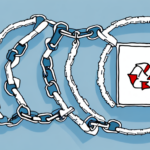FedEx Releases Updated Guidelines for Shipping Hazardous Materials
FedEx, a global leader in courier and logistics services, has recently updated its guidelines for shipping hazardous materials. Hazardous materials (HazMat) are substances or materials that pose potential risks to health, safety, and the environment. The revised policy aims to enhance the safety of shippers, transporters, and recipients involved in the supply chain. This article examines the implications of FedEx's updated guidelines on the industry and provides practical advice on compliance.
Why FedEx's New Guidelines are Crucial for Shipping Hazardous Materials
Shipping hazardous materials is a critical operation that demands rigorous safety measures. Uncontrolled and unsafe transportation of these materials can lead to injuries, fatalities, environmental damage, and property loss. It is imperative for all stakeholders in the supply chain to ensure that hazardous materials are correctly identified, classified, packaged, labeled, and transported in accordance with safety regulations. FedEx's updated guidelines offer clear instructions and requirements for the safe and secure transportation of hazardous materials, thereby enhancing compliance and safety standards.
A key advantage of FedEx's revised guidelines is the implementation of a standardized approach to shipping hazardous materials. This standardization ensures that all parties involved—shippers, carriers, and receivers—have a clear understanding of their roles and responsibilities, reducing confusion and the likelihood of errors, and ultimately leading to safer transportation practices.
The new guidelines are also designed to stay abreast of evolving regulations and industry best practices. As new safety concerns emerge or regulations are updated, FedEx commits to revising its guidelines to maintain their relevance and effectiveness. This proactive approach is essential for protecting individuals, property, and the environment from the inherent risks associated with hazardous materials transportation.
Understanding the Risks Associated with Shipping Hazardous Materials
Shipping hazardous materials involves significant risks, especially if materials are unknown, improperly labeled, or mismanaged. Potential risks include fires, explosions, chemical reactions, gas leaks, environmental contamination, and health hazards such as burns, inhalation injuries, and skin irritation. Understanding these risks is crucial for implementing appropriate mitigation measures.
Proper labeling is one of the most critical steps in mitigating the risks associated with shipping hazardous materials. According to the Occupational Safety and Health Administration (OSHA), all hazardous materials must be correctly labeled as per Department of Transportation (DOT) regulations. Labels must include the proper shipping name, identification number, hazard class, and packing group. Additionally, labels must be visible, durable, and securely attached to the package. Incorrect labeling can result in severe consequences, including fines, legal action, and even injury or death.
Key Changes in FedEx's Updated Guidelines
FedEx's updated guidelines for hazardous materials align with the regulations and standards of the International Air Transport Association (IATA) and the International Civil Aviation Organization (ICAO). Notable changes in the new policy include:
- Updated definitions and classifications of hazardous materials.
- New requirements for documentation, packaging, labeling, and marking of hazardous materials.
- Enhanced inspection and training practices to ensure compliance and safety.
- Introduction of a new section on lithium-ion batteries and electronic equipment containing lithium-ion batteries.
- New procedures for handling damaged or leaking hazardous material packages to prevent incidents.
One of the most significant updates is the addition of specific guidelines for lithium-ion batteries and electronic equipment containing them. This section outlines detailed requirements for packaging, labeling, and documentation to ensure safe transportation. Shippers must provide comprehensive information about the type and quantity of lithium-ion batteries in their packages, enabling FedEx to determine appropriate handling procedures.
Another critical change is the increased focus on inspection and training. FedEx has implemented advanced training programs for its employees to keep them informed about the latest regulations and hazardous materials handling practices. Additionally, the company has intensified its inspection processes to identify potential hazards and ensure shipments comply with the updated guidelines.
How to Comply with FedEx's Updated Guidelines for Shipping Hazardous Materials
Compliance with FedEx's updated guidelines for shipping hazardous materials involves adhering to specific procedures and regulations. Shippers must:
- Properly identify and classify hazardous materials based on their properties and associated risks.
- Comply with packaging and labeling requirements that accurately reflect the substance's risks.
- Maintain accurate documentation, including detailed descriptions of the materials, their composition, quantity, and handling instructions for emergency responders.
- Utilize licensed and trained personnel and shipping carriers equipped to handle and transport hazardous materials.
- Conduct regular safety checks and inspections to identify potential hazards and ensure adherence to safety standards and regulations.
Failure to comply with these guidelines can result in severe consequences, including fines, legal action, and environmental and public health damage. Shippers must also be aware of additional regulations and restrictions that may apply to specific hazardous materials, such as explosives or radioactive substances.
Moreover, shippers should implement additional safety measures, such as providing training and protective equipment to personnel handling hazardous materials and establishing emergency response plans in case of accidents or spills. These precautions not only ensure compliance with FedEx's guidelines but also promote the safe and responsible handling of hazardous materials.
The Consequences of Non-Compliance with FedEx's Guidelines
Non-compliance with FedEx's updated guidelines for hazardous materials can lead to severe penalties, including legal liability for injuries, substantial fines, and negative publicity that can damage a company's reputation. FedEx reserves the right to refuse shipments that do not comply with safety regulations, forcing shippers to bear the costs and risks associated with the uncontrolled transportation and disposal of hazardous materials.
Ensuring Safe Handling of Hazardous Materials During Shipping
To guarantee the safe handling of hazardous materials during transportation and shipping, it is essential to:
- Accurately identify and classify hazardous materials based on their properties and risks.
- Use appropriate packaging and labeling materials that reflect the substance's risks and comply with safety regulations.
- Adhere to correct procedures and regulations for the shipment and transport of hazardous materials.
- Regularly perform safety checks and inspections to identify potential hazards and ensure compliance with safety standards and regulations.
- Provide comprehensive documentation to the carrier, including detailed descriptions of the materials, their composition, quantity, and handling instructions for emergency responders.
Benefits of Following FedEx's Guidelines for Shipping Hazardous Materials
Adhering to FedEx's guidelines for shipping hazardous materials offers numerous benefits, including:
- Ensuring the safety of personnel involved in handling and transporting hazardous materials.
- Protecting the environment from potential contamination and damage.
- Reducing the risk of product loss due to accidents or improper handling.
- Avoiding costly legal and liability issues associated with non-compliance.
- Enhancing the company's reputation among customers and the public, fostering long-term business relationships with FedEx.
Most Common Hazardous Materials Shipped by FedEx
FedEx handles a wide range of hazardous materials, including chemicals, infectious substances, flammable and toxic gases, and liquid or solid fuels. Some of the most frequently shipped hazardous materials include:
- Lithium-ion batteries and electronic equipment containing lithium-ion batteries
- Paints, paint thinners, and other solvents
- Schedule 1 drugs and medications regulated by the Food and Drug Administration (FDA)
- Corrosive materials such as acids, batteries, and cleaning agents
- Biological and infectious substances, including medical specimens and biological research materials
Proper Labeling and Marking of Packages Containing Hazardous Materials
Proper labeling and marking of packages containing hazardous materials are critical for ensuring safe transportation. Shippers must adhere to strict guidelines, which include:
- Clearly indicating the contents of the package on the outer surface.
- Including all necessary warnings and symbols specific to the materials inside.
- Providing contact information for both the shipper and receiver.
Proper labeling not only complies with regulations but also ensures that handlers are aware of the contents, facilitating appropriate safety measures during transportation.
Packaging and Storing Hazardous Materials Before Shipping
Effective packaging and storage are paramount when preparing hazardous materials for shipping. Here are essential tips for handling these materials:
- Use only approved and sturdy packaging materials that comply with safety regulations.
- Employ secondary packaging for additional protection, such as using absorbent materials as a cushion for liquids.
- Store hazardous materials in designated and approved storage areas to prevent unauthorized access and accidents.
- Ensure proper ventilation and adhere to temperature regulations when storing hazardous materials to prevent degradation or reactions.
Training Employees on Handling and Shipping Hazardous Materials
Proper training is crucial for the safe handling and shipping of hazardous materials. Employers must ensure that all employees directly involved in handling hazardous materials receive comprehensive training in compliance with federal, local, and international regulations. Key aspects of training should include:
- Classification of hazardous materials based on their properties and risks.
- Proper packaging, labeling, and marking techniques.
- Accurate documentation and record-keeping practices.
- Safety best practices and emergency response procedures.
Regular refresher training is essential to keep employees updated on changes in safety standards and regulations regarding hazardous materials.
The Role of Technology in Ensuring Safe Transportation of Hazardous Materials
Advancements in technology play a significant role in enhancing the safety and compliance of hazardous materials transportation. Emerging technologies include:
- Barcode scanning and tracking systems to identify hazardous products and increase visibility of potential risks.
- Online safety training programs and resources tailored for shipping hazardous materials.
- Digital documentation systems for streamlined and accurate shipping processes.
- Analytical tools for verifying the appropriateness of materials for transport and determining quantity limitations for certain hazardous substances.
These technologies not only improve efficiency but also ensure that safety protocols are consistently followed, reducing the likelihood of accidents and regulatory violations.
Comparing FedEx's Guidelines with Other Companies' Policies on Shipping Hazardous Materials
Guidelines and policies for shipping hazardous materials can vary among shipping companies, making it essential for shippers and carriers to understand the specific requirements of each provider. FedEx's updated guidelines are based on and align with international standards set by organizations such as the International Air Transport Association (IATA) and the International Civil Aviation Organization (ICAO). By adhering to FedEx's guidelines, companies can be confident that their shipping practices meet internationally recognized safety standards, facilitating smoother and safer transportation of hazardous materials.
Conclusion
Shipping hazardous materials is a complex and demanding task that requires strict adherence to safety and compliance regulations. FedEx's updated guidelines provide a comprehensive framework for the safe and secure handling, transportation, and delivery of hazardous materials, minimizing risks to personnel, property, and the environment. Companies that frequently ship hazardous materials must familiarize themselves with FedEx's updated guidelines, comply with regulations, and implement best practices to ensure the safety of all parties involved in the supply chain and protect their brand from potential liability and legal risks.






















